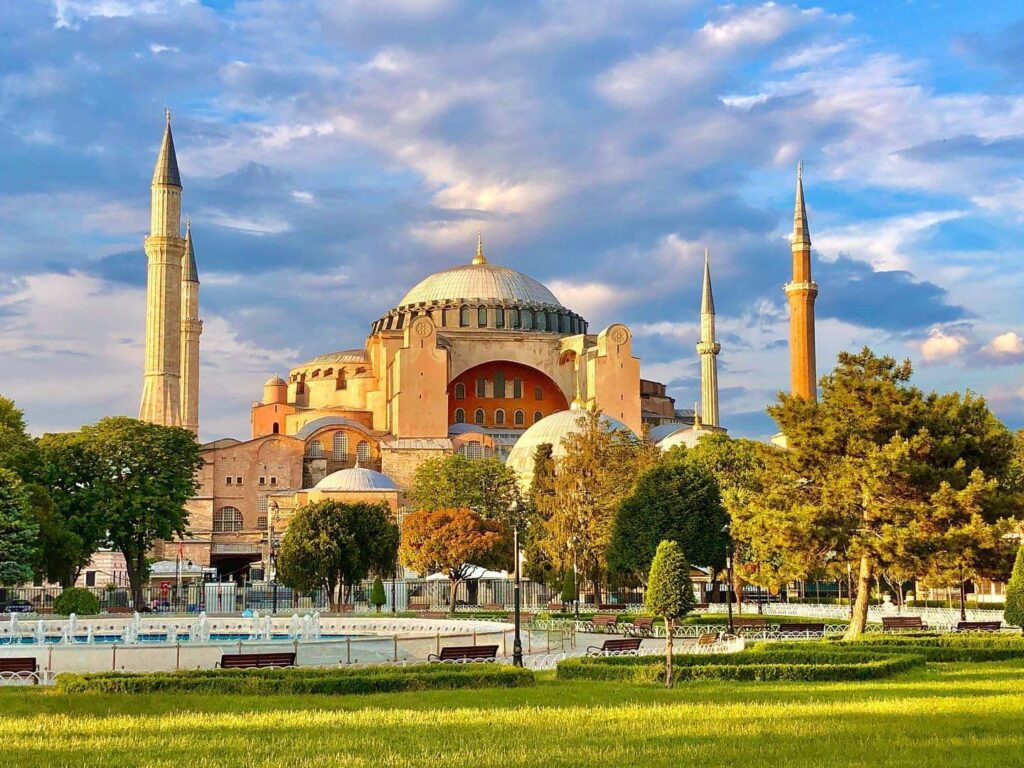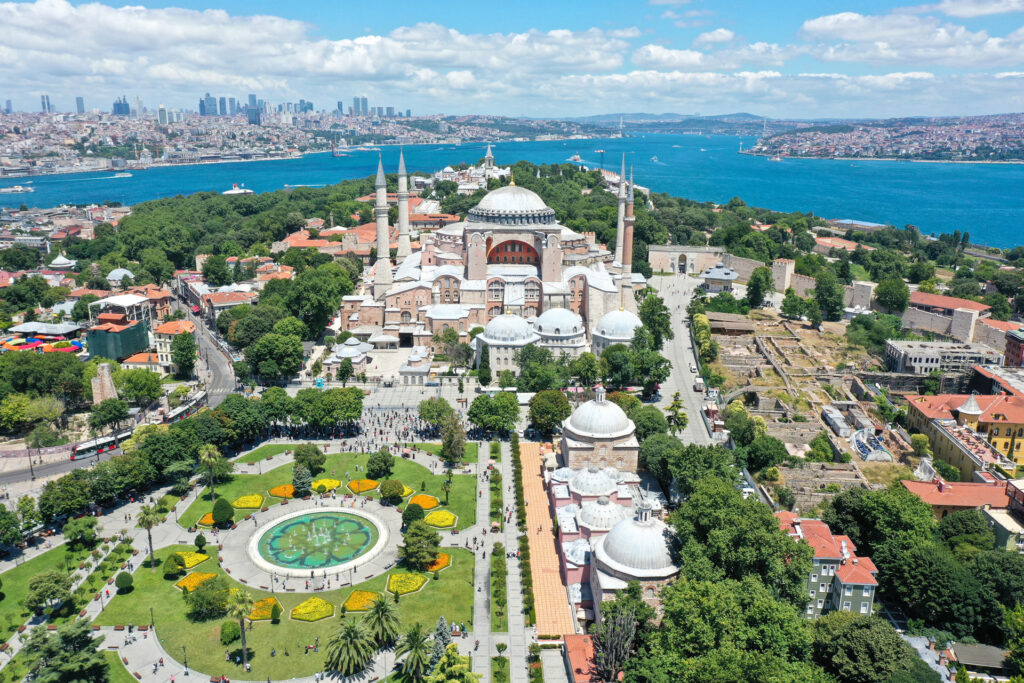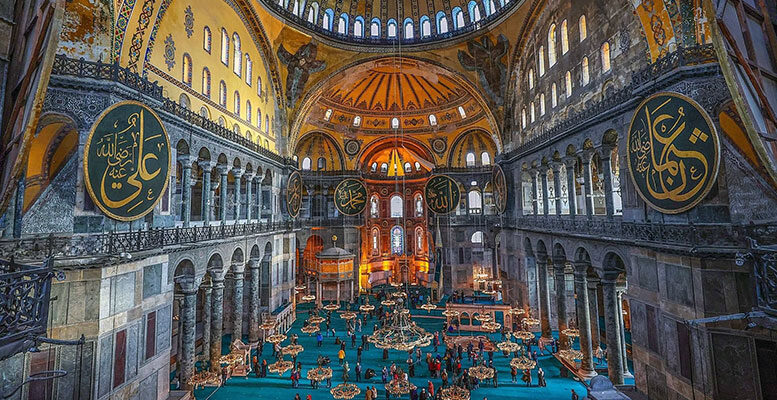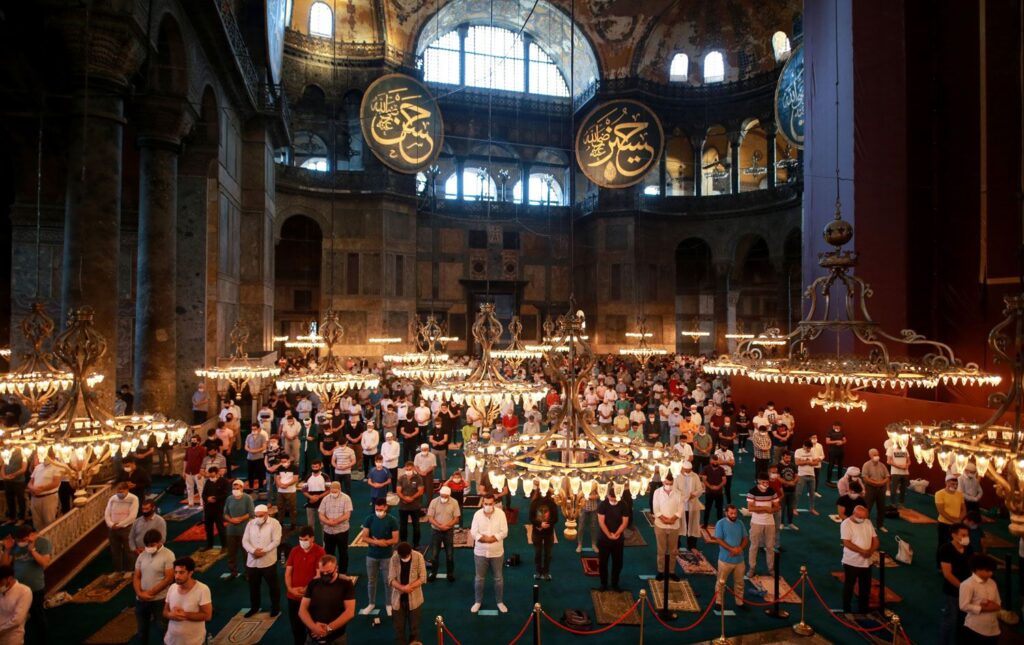A Journey Through Time: The History of Hagia Sophia
Hagia Sophia, also known as Ayasofya in Turkish, has a history that spans nearly 1,500 years. It was originally built as a Christian basilica in the year 53. Its massive dome, measuring approximately 32 meters in diameter, was a groundbreaking architectural achievement and held the record as the largest dome in the world for centuries.

For nearly a millennium, Hagia Sophia served as the principal cathedral of the Eastern Orthodox Church, witnessing significant religious ceremonies and imperial events. In 1453, the Byzantine Empire fell to the Ottomans, and Sultan Mehmed II, known as Mehmed the Conqueror, converted Hagia Sophia into a mosque. As part of the conversion, minarets were added to the structure, and the Christian mosaics were plastered over or removed, reflecting the Islamic faith’s prohibition on depicting human figures in religious art.
For nearly five centuries, Hagia Sophia served as one of the most significant mosques in the Ottoman Empire. Under the Ottomans, the building underwent further renovations and additions, including the construction of a grand chandelier and the mihrab, indicating the direction of Mecca for prayer.

Experiencing the Grandeur Today
Visiting Hagia Sophia today offers a unique opportunity to witness the confluence of two great religions and civilizations. As you step inside, the sheer grandness of the structure leaves you in awe. The vast dome seems to reach for the heavens, while the arches and columns create an atmosphere of elegance and harmony.

One cannot help but marvel at the remnants of Byzantine mosaics that have survived despite centuries of political and religious transitions. The mosaics, now protected and preserved, depict the Virgin Mary with the infant Jesus, the Deesis mosaic of Christ Pantocrator, and other religious figures. They serve as a poignant reminder of the building’s multifaceted history.

Preserving Heritage for Future Generations
Today, as Hagia Sophia continues to stand as a mosque, it remains open to tourists and visitors, allowing them to admire its beauty while also participating in religious activities. The Turkish government and various organizations continue to work tirelessly to preserve this treasure and protect its cultural and historical significance for future generations. Hagia Sophia is more than just an architectural marvel; it is a symbol of the resilience and adaptability of human civilization. Its ability to transcend religious and cultural boundaries, serving as a cathedral, mosque, and museum throughout history, echoes the story of Istanbul.
Let us make your dream vacation a reality in Turkey. Contact us on Facebook, WhatsApp, and stay connected on LinkedIn, Instagram, Twitter for updates.
Explore our travel packages and destinations. Let us create unforgettable memories together!










